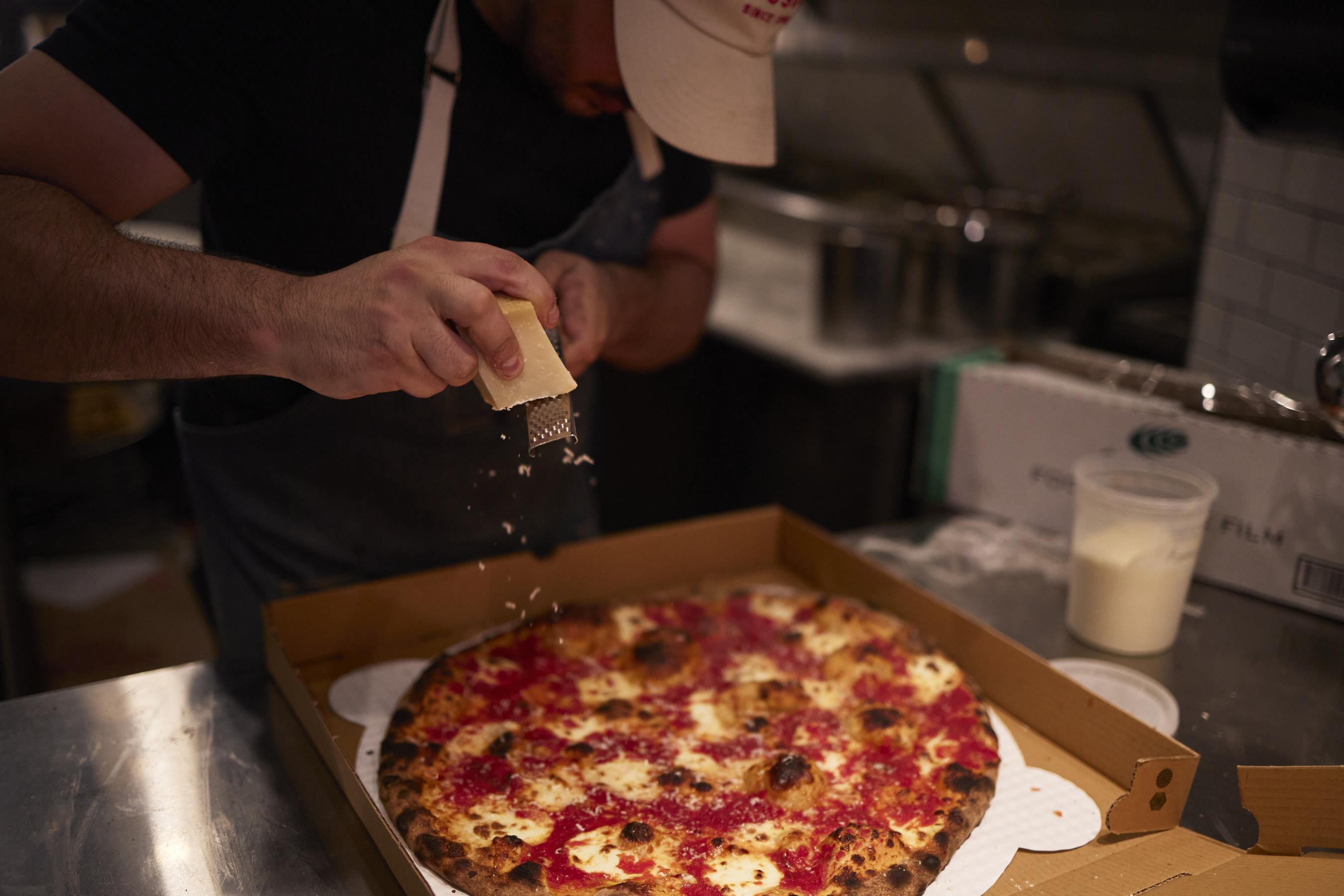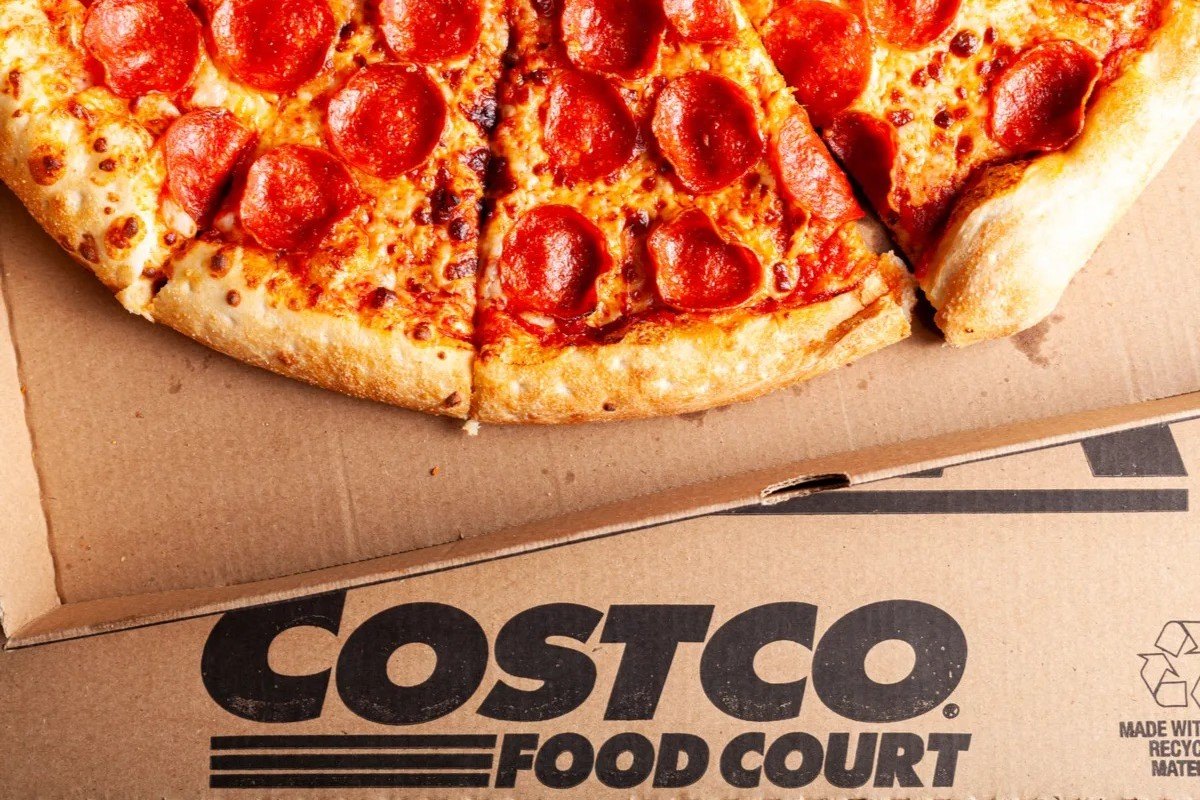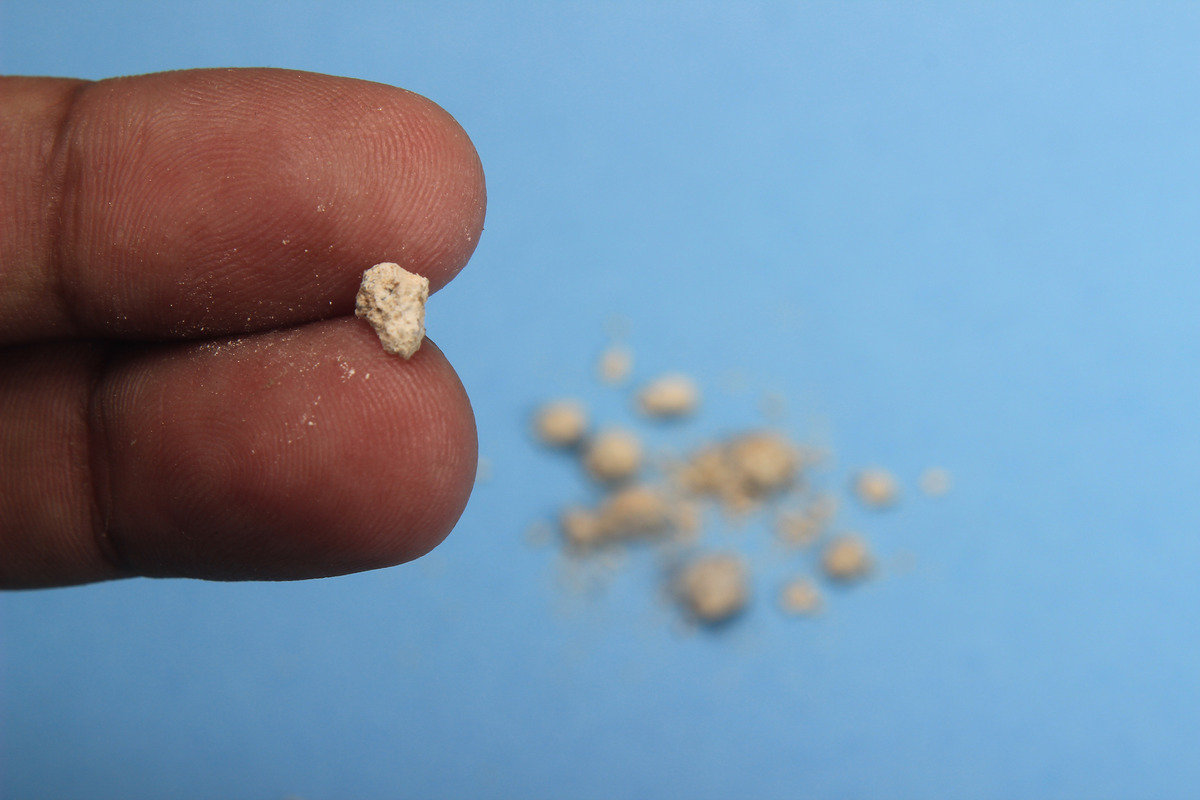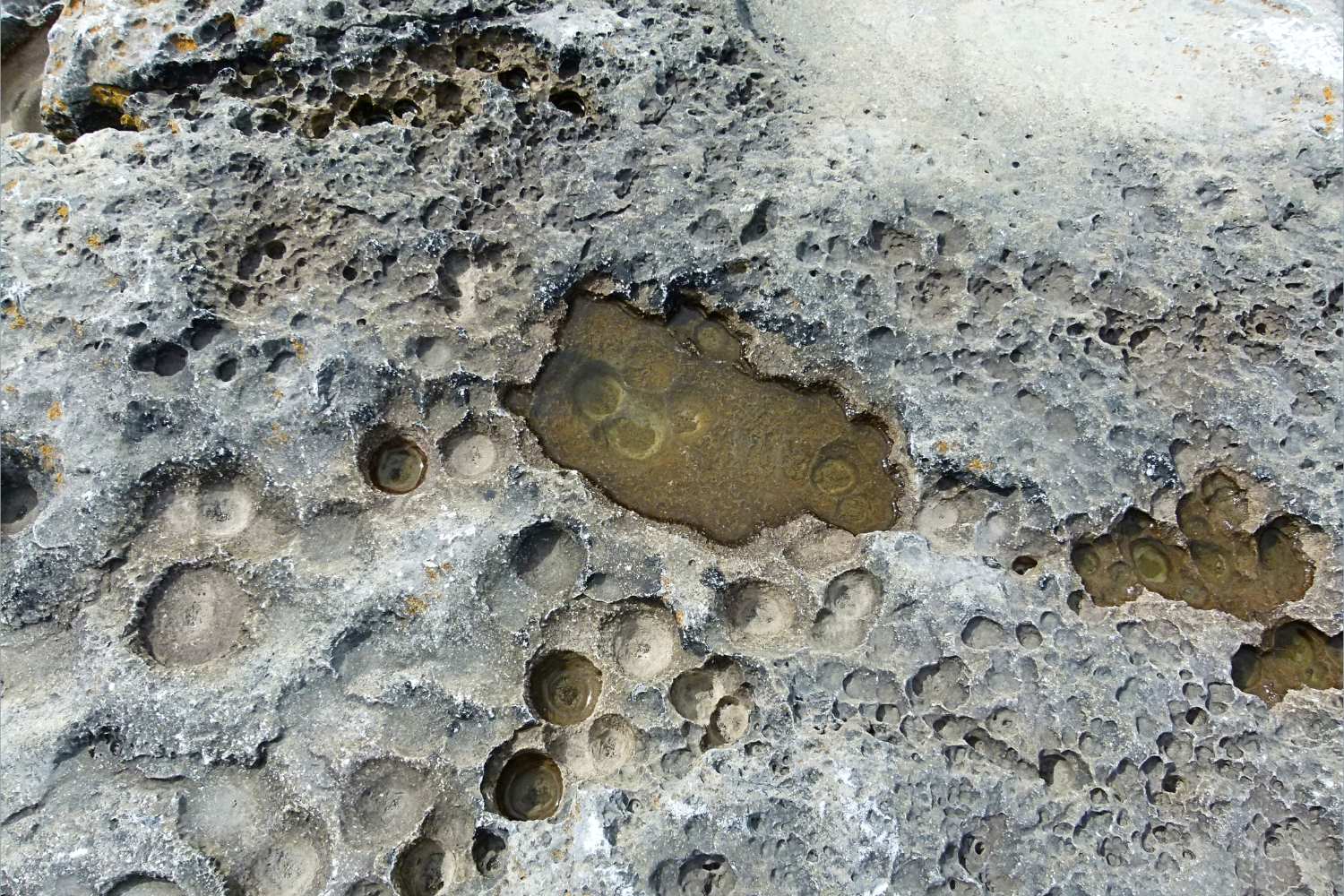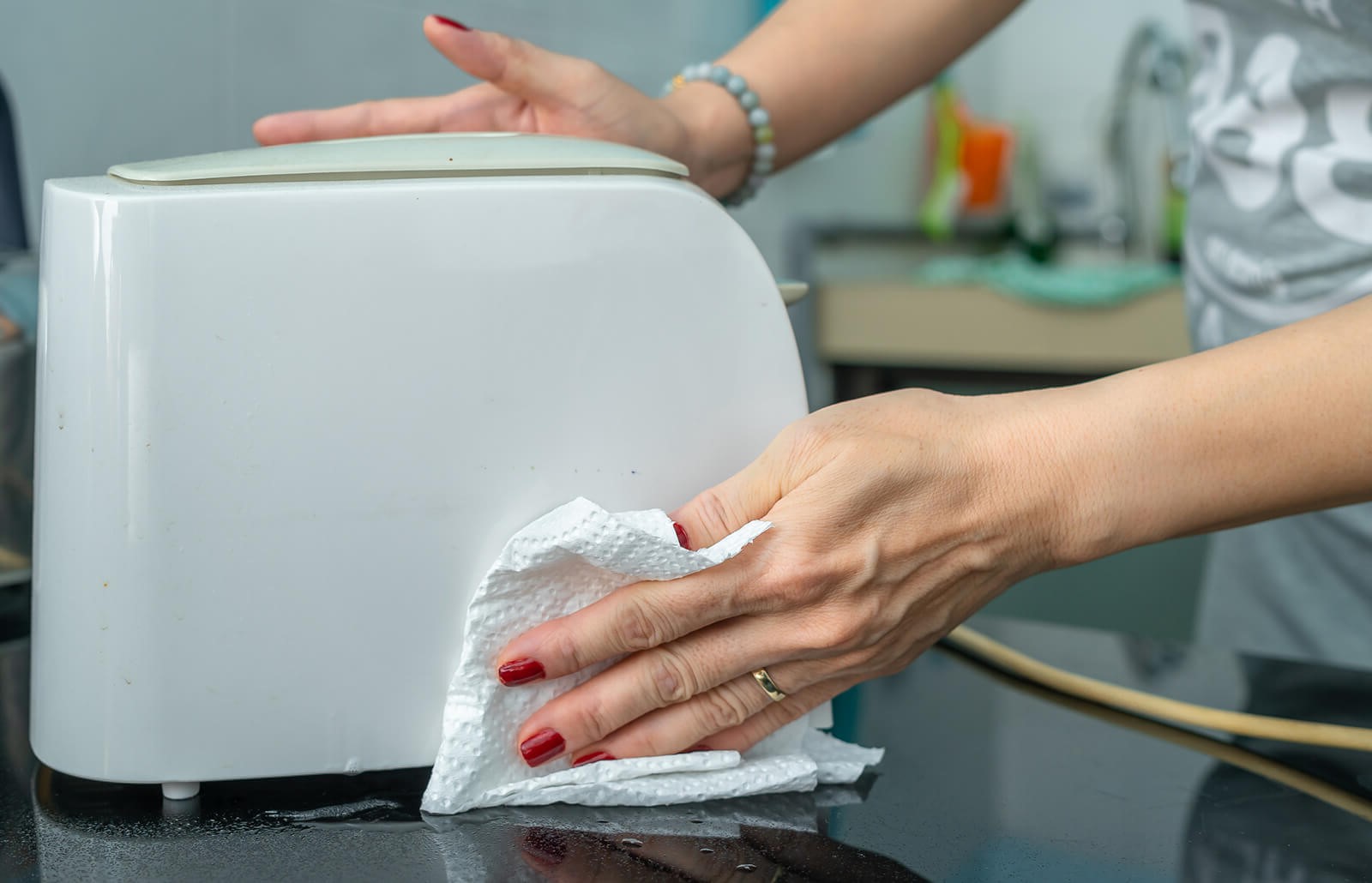Home>Home and Garden>How To Clean A Pizza Stone
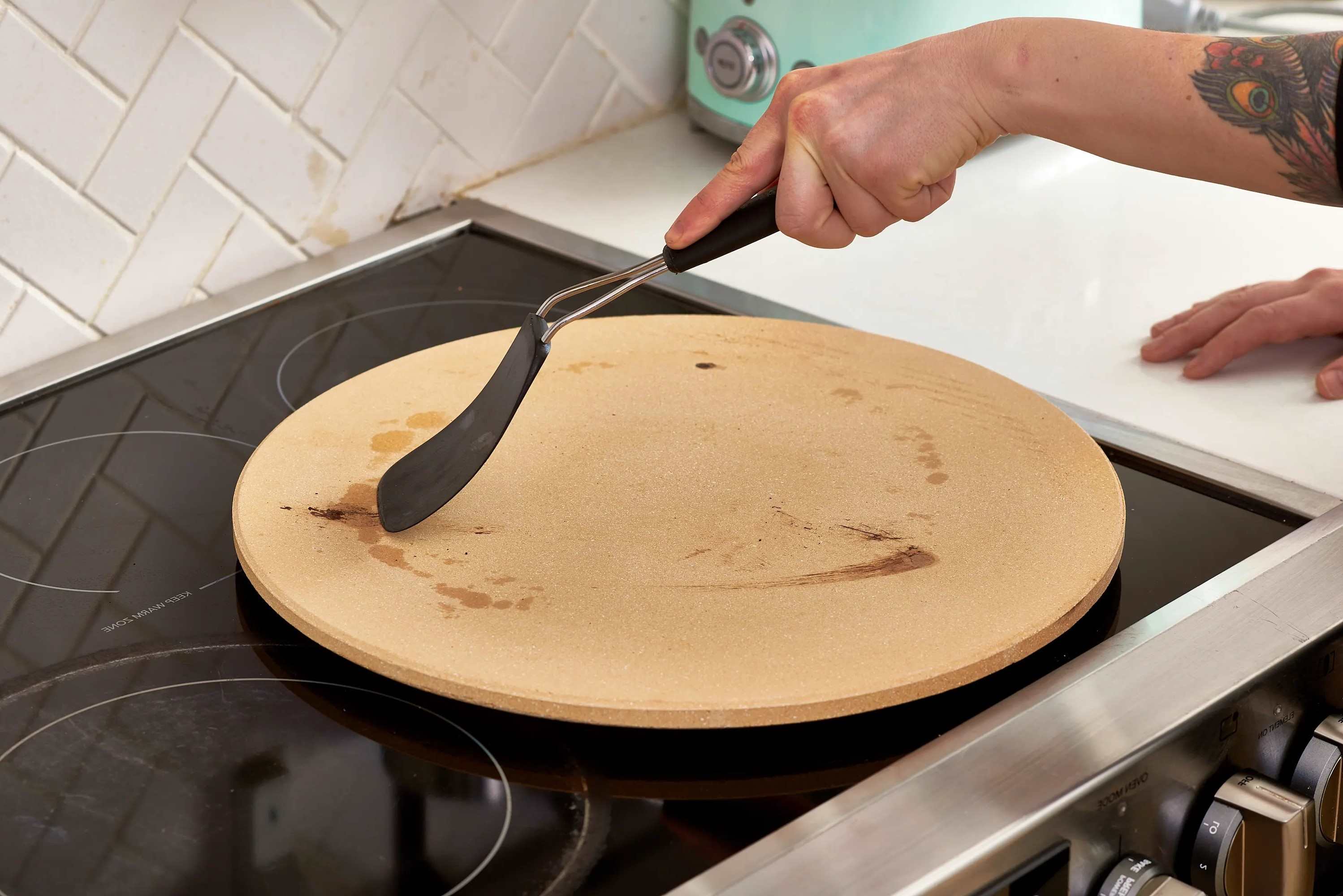

Home and Garden
How To Clean A Pizza Stone
Published: February 27, 2024
Learn the best methods for cleaning a pizza stone at home and maintaining it for long-lasting use. Keep your pizza stone in top condition with these simple home and garden tips.
(Many of the links in this article redirect to a specific reviewed product. Your purchase of these products through affiliate links helps to generate commission for Noodls.com, at no extra cost. Learn more)
Table of Contents
Introduction
Cleaning a pizza stone is an essential aspect of maintaining its quality and ensuring the deliciousness of your homemade pizzas. Over time, pizza stones can accumulate food residue, grease, and stains from the baking process, which can affect the flavor and texture of your pizzas. Therefore, knowing how to properly clean and care for your pizza stone is crucial for achieving the best results in your culinary endeavors.
A pizza stone, also known as a baking stone, is a versatile kitchen tool that is revered for its ability to produce crispy and evenly cooked pizzas. Made from natural materials such as ceramic, clay, or cordierite, these stones are designed to absorb moisture and distribute heat evenly, resulting in a perfectly crisp crust. However, without regular cleaning and maintenance, the porous surface of the pizza stone can become clogged with food particles and oils, diminishing its performance and affecting the taste of your pizzas.
In this comprehensive guide, we will delve into the step-by-step process of cleaning a pizza stone, ensuring that it remains in pristine condition for countless pizza-making adventures. By following these simple yet effective cleaning techniques, you can prolong the lifespan of your pizza stone and continue to enjoy delectable, restaurant-quality pizzas in the comfort of your own home.
Now, let's embark on this journey to discover the best practices for cleaning and maintaining your pizza stone, allowing you to unleash your culinary creativity and savor the delightful flavors of homemade pizzas.
Read more: How To Make Stone Bricks In Minecraft
Why Clean Your Pizza Stone
Cleaning your pizza stone is crucial for several reasons. Firstly, a clean pizza stone ensures the preservation of its natural properties, allowing it to effectively absorb moisture and distribute heat evenly. Over time, food residue, grease, and stains can accumulate on the surface of the pizza stone, hindering its ability to function optimally. By regularly cleaning your pizza stone, you can maintain its porous structure, which is essential for achieving the desired crispy crust and even cooking of your pizzas.
Furthermore, cleaning your pizza stone is vital for food safety and hygiene. As the stone is exposed to high temperatures during the baking process, it is susceptible to the buildup of bacteria and food particles. Failure to clean the pizza stone after each use can lead to the growth of harmful microorganisms, compromising the safety of your food. Therefore, thorough cleaning and sanitation of the pizza stone are essential to prevent potential health risks and ensure the safety of your culinary creations.
In addition, a clean pizza stone contributes to the overall flavor and quality of your pizzas. Residual food particles and grease left on the stone can impart unwanted flavors and odors to your pizzas, detracting from the authentic taste and aroma you desire. By maintaining a clean pizza stone, you can preserve the integrity of the ingredients and achieve the delicious, restaurant-quality pizzas that you crave.
Moreover, regular cleaning and maintenance of your pizza stone prolong its lifespan, allowing you to enjoy countless pizza-making adventures. By preventing the buildup of stubborn stains and residues, you can avoid the need for aggressive cleaning methods that may damage the stone over time. Proper care and cleaning of the pizza stone not only ensure its longevity but also contribute to consistent cooking results and the enjoyment of delectable pizzas for years to come.
In essence, cleaning your pizza stone is essential for preserving its functionality, ensuring food safety, enhancing the flavor of your pizzas, and prolonging its lifespan. By understanding the significance of maintaining a clean pizza stone, you can elevate your culinary experiences and relish the unparalleled joy of creating and savoring perfect homemade pizzas.
Materials Needed
To embark on the journey of cleaning your pizza stone, you will need a few essential materials to ensure a thorough and effective cleaning process. These items are readily available and will equip you with the necessary tools to restore your pizza stone to its pristine condition. Here are the materials needed for cleaning your pizza stone:
-
Warm Water: Utilizing warm water is essential for loosening food particles and stains from the surface of the pizza stone. The gentle warmth helps to soften residues, making them easier to remove during the cleaning process.
-
Dish Soap: A mild dish soap serves as a crucial component in the cleaning process, aiding in the removal of grease and stubborn stains from the pizza stone. Opt for a gentle, non-abrasive dish soap to ensure the preservation of the stone's natural properties.
-
Non-metallic Scraper or Spatula: A non-metallic scraper or spatula is indispensable for gently removing baked-on food debris from the pizza stone. This tool allows you to dislodge stubborn residues without causing damage to the stone's surface.
-
Soft Bristle Brush or Cloth: A soft bristle brush or cloth is ideal for gently scrubbing the pizza stone, assisting in the removal of residual food particles and stains. Ensure that the brush or cloth is non-abrasive to prevent scratching or damaging the surface of the stone.
-
Clean, Dry Towel: Having a clean, dry towel on hand is essential for drying the pizza stone after cleaning. This ensures the removal of excess moisture and prevents the development of mold or mildew on the stone's surface.
-
Oven: Preheating your oven is a crucial step in the cleaning process, as it facilitates the removal of food residues and prepares the pizza stone for thorough cleaning and maintenance.
By gathering these materials, you will be well-prepared to embark on the journey of cleaning your pizza stone, ensuring that it remains in optimal condition for the creation of delectable, restaurant-quality pizzas. With these essential materials at your disposal, you can proceed with confidence, knowing that you have the necessary tools to restore your pizza stone to its former glory.
Step 1: Preheat Your Oven
Preheating your oven is a crucial initial step in the process of cleaning your pizza stone. This essential preparatory measure serves multiple purposes, all of which contribute to the effectiveness of the subsequent cleaning steps.
To begin, preheating the oven helps to loosen and soften any stubborn food residues, grease, or stains that may have accumulated on the surface of the pizza stone. As the oven reaches a moderate temperature, the heat gently works to break down the adhered particles, making them easier to remove during the cleaning process. This preliminary heating also aids in preparing the pizza stone for thorough cleaning, ensuring that any residual food remnants are primed for effortless removal.
Furthermore, preheating the oven serves to eliminate any residual moisture or dampness present on the pizza stone. By subjecting the stone to the gentle warmth of the preheated oven, any lingering moisture is evaporated, effectively drying the surface and preparing it for the subsequent cleaning steps. This is essential for preventing the development of mold or mildew on the pizza stone and ensuring that the cleaning process is conducted on a dry and receptive surface.
In addition, preheating the oven creates an optimal environment for the subsequent cleaning actions, enhancing the overall efficacy of the cleaning process. The moderate heat within the oven contributes to the overall effectiveness of the cleaning materials and tools, facilitating the removal of food residues and stains from the pizza stone. This controlled heat environment sets the stage for a thorough and successful cleaning endeavor, allowing you to restore your pizza stone to its pristine condition.
By preheating your oven as the initial step in the cleaning process, you are laying the foundation for a comprehensive and effective cleaning experience. This preparatory measure sets the stage for the subsequent cleaning actions, ensuring that the pizza stone is primed for thorough cleaning and maintenance. With the oven preheated, you are now ready to embark on the journey of restoring your pizza stone to its optimal state, paving the way for countless future pizza-making adventures.
Step 2: Scrape Off Debris
After preheating the oven and preparing the pizza stone, the next crucial step in the cleaning process involves the meticulous removal of debris and baked-on food residues from the surface of the stone. This step is essential for restoring the porous structure of the pizza stone and ensuring its optimal functionality in producing perfectly cooked pizzas.
To begin, equip yourself with a non-metallic scraper or spatula, as these tools are gentle yet effective in dislodging stubborn debris without causing damage to the stone's surface. With the preheated oven and the pizza stone in place, carefully inspect the surface for any residual food particles, grease, or stains that may have accumulated during previous use.
Using the non-metallic scraper or spatula, gently but firmly work across the surface of the pizza stone, targeting areas where debris is present. Employing a back-and-forth motion, carefully dislodge the baked-on residues, ensuring that the porous structure of the stone is gradually restored. Exercise patience and precision, as thorough removal of debris at this stage sets the foundation for a successful cleaning outcome.
As you scrape off the debris, be mindful of applying consistent pressure to avoid exerting excessive force that may potentially damage the stone. The goal is to delicately remove the adhered particles without compromising the integrity of the pizza stone. Focus on areas where food residues are most prevalent, ensuring that the entire surface is meticulously addressed.
Throughout this process, maintain a keen eye for any particularly stubborn debris that may require additional attention. By methodically working across the surface of the pizza stone, you can effectively dislodge and remove the accumulated residues, preparing the stone for the subsequent cleaning steps.
Upon completing this step, the surface of the pizza stone should be noticeably free of debris and baked-on food particles, setting the stage for the next phase of the cleaning process. With the debris successfully scraped off, the pizza stone is now primed for the subsequent cleaning actions, ensuring that it remains in optimal condition for the creation of delectable, restaurant-quality pizzas.
Read more: How To Make Smooth Stone In Minecraft
Step 3: Wipe with Damp Cloth
After successfully removing debris and baked-on residues from the surface of the pizza stone, the next pivotal step in the cleaning process involves the gentle yet thorough wiping of the stone with a damp cloth. This crucial step serves as a meticulous cleansing action, ensuring that any remaining food particles, grease, or stains are effectively lifted from the porous surface of the stone.
To commence this step, prepare a clean, soft cloth and dampen it with warm water. The gentle warmth of the water aids in loosening residual food particles and stains, facilitating their effortless removal from the pizza stone. It is imperative to ensure that the cloth is only slightly damp, as excessive moisture may hinder the effectiveness of the cleaning process and prolong the drying phase.
With the damp cloth in hand, delicately wipe the entire surface of the pizza stone, paying close attention to areas where stubborn residues may persist. Employ gentle, circular motions to effectively lift and dislodge any remaining food particles, ensuring that the porous structure of the stone is thoroughly cleansed. Exercise patience and precision, as this meticulous wiping action is instrumental in restoring the pristine condition of the pizza stone.
Throughout the wiping process, periodically inspect the cloth for any transferred residues, ensuring that the cleaning action is yielding the desired results. If necessary, rinse the cloth and continue the gentle wiping process until the surface of the pizza stone is visibly free of any remaining food particles or stains. This diligent approach guarantees that the stone is impeccably cleansed, setting the stage for the subsequent drying and seasoning steps.
Upon completing the wiping process, the surface of the pizza stone should exude a renewed cleanliness, free from residual food particles and stains. This meticulous cleansing action ensures that the porous structure of the stone is prepared for the subsequent drying phase, setting the foundation for the final step of seasoning the pizza stone. With the wiping process successfully executed, the pizza stone is now poised for the subsequent phases of the cleaning and maintenance journey, ensuring its optimal condition for the creation of delectable, restaurant-quality pizzas.
Step 4: Dry Thoroughly
After the meticulous wiping process, the crucial step of thoroughly drying the pizza stone ensues, ensuring that excess moisture is effectively removed and the stone is prepared for the final seasoning phase. Proper drying is essential for preventing the development of mold or mildew on the surface of the stone and maintaining its pristine condition for future culinary endeavors.
To commence the drying process, carefully inspect the surface of the pizza stone to ensure that it is free of any residual moisture resulting from the wiping action. Utilize a clean, dry towel to gently and methodically pat the entire surface of the stone, absorbing any lingering moisture and ensuring that it is impeccably dry. Exercise patience and thoroughness, as the complete removal of moisture is paramount for the subsequent seasoning step.
As you proceed with the drying process, pay close attention to any areas where moisture may be more prevalent, ensuring that the entire surface is meticulously addressed. By employing gentle yet deliberate patting motions, you can effectively expedite the drying phase, guaranteeing that the pizza stone is primed for the final step of seasoning.
Throughout the drying process, periodically inspect the towel for any absorbed moisture, ensuring that the stone is gradually and thoroughly dried. If necessary, utilize additional dry towels to ensure that the entire surface is impeccably dry, setting the stage for the subsequent seasoning action.
Upon completing the drying process, the surface of the pizza stone should exude a pristine dryness, free from any residual moisture. This meticulous drying action ensures that the stone is prepared for the final step of seasoning, setting the foundation for the optimal maintenance and care of the pizza stone.
With the pizza stone thoroughly dried, it is now poised for the final phase of seasoning, ensuring that it remains in optimal condition for the creation of delectable, restaurant-quality pizzas. The successful completion of the drying process sets the stage for the subsequent seasoning action, allowing you to continue your culinary adventures with the assurance of a well-maintained and pristine pizza stone.
Step 5: Season Your Pizza Stone
Seasoning your pizza stone is a crucial step in maintaining its optimal functionality and enhancing its performance in producing delectable, restaurant-quality pizzas. This final phase of the cleaning process involves the application of a thin layer of oil to the surface of the pizza stone, creating a seasoned patina that promotes a desirable crispy crust and prevents sticking during the baking process.
To begin the seasoning process, preheat your oven to a moderate temperature, typically around 350-400°F (175-200°C). This gentle heat prepares the pizza stone for the oil application, ensuring that the oil effectively penetrates the porous surface of the stone.
Next, select a high-smoke-point oil such as vegetable oil, canola oil, or flaxseed oil for seasoning your pizza stone. These oils are ideal for creating a durable seasoning layer that enhances the non-stick properties of the stone and contributes to the development of a desirable crust on your pizzas.
Using a clean, dry cloth or paper towel, apply a thin, even layer of the selected oil to the entire surface of the pizza stone. Ensure that the oil is evenly distributed, covering the entire surface and edges of the stone. The thin layer of oil forms a protective barrier, preventing moisture from seeping into the stone and contributing to the development of a seasoned patina.
Once the oil is applied, place the pizza stone in the preheated oven and allow it to bake for approximately 1-2 hours. This extended baking period allows the oil to polymerize, forming a durable and non-stick seasoning layer on the surface of the stone. As the oil undergoes polymerization, it bonds with the porous structure of the stone, creating a resilient coating that enhances the performance of the pizza stone during the baking process.
After the designated baking time has elapsed, turn off the oven and allow the pizza stone to cool completely before removing it. The seasoned pizza stone is now ready for use, boasting a protective and non-stick patina that enhances its functionality and ensures the creation of perfectly cooked pizzas.
By meticulously seasoning your pizza stone, you can prolong its lifespan, enhance its performance, and elevate the quality of your homemade pizzas. This essential step in the cleaning process ensures that your pizza stone remains in optimal condition, ready to deliver the crispy, evenly cooked pizzas that you crave.
Conclusion
In conclusion, the process of cleaning and maintaining a pizza stone is essential for preserving its functionality, ensuring food safety, and enhancing the quality of homemade pizzas. By following the step-by-step guide outlined in this comprehensive article, you can effectively restore your pizza stone to its pristine condition, ready to deliver delectable, restaurant-quality pizzas for countless culinary adventures.
Cleaning your pizza stone is not merely a routine maintenance task; it is a fundamental practice that safeguards the integrity of the stone and contributes to the enjoyment of perfectly cooked pizzas. Through the meticulous removal of debris, gentle wiping with a damp cloth, thorough drying, and the crucial step of seasoning, you can ensure that your pizza stone remains in optimal condition, ready to elevate your culinary creations.
The significance of maintaining a clean pizza stone extends beyond its physical appearance. By preserving the porous structure of the stone, you can achieve the desired crispy crust and even cooking of your pizzas, enhancing their overall texture and flavor. Additionally, regular cleaning and seasoning contribute to the development of a non-stick patina, preventing sticking and ensuring effortless release of pizzas from the stone.
Furthermore, the cleaning process plays a pivotal role in ensuring food safety and hygiene. By diligently removing food residues and stains, you can mitigate the risk of bacterial growth and maintain a clean, safe surface for food preparation. This commitment to cleanliness not only enhances the safety of your culinary endeavors but also contributes to the overall enjoyment and satisfaction derived from homemade pizzas.
In essence, the journey of cleaning a pizza stone is a testament to the dedication and care invested in the pursuit of culinary excellence. By embracing the cleaning process as an integral part of your pizza-making routine, you can savor the unparalleled joy of creating and savoring perfect homemade pizzas, knowing that your pizza stone is meticulously maintained and primed for exceptional performance.
As you embark on this journey of cleaning and maintaining your pizza stone, remember that each step contributes to the preservation of its natural properties and the enhancement of your culinary experiences. With the knowledge and techniques acquired from this guide, you are equipped to uphold the integrity of your pizza stone, ensuring that it remains a steadfast companion in your quest for the perfect homemade pizza.
